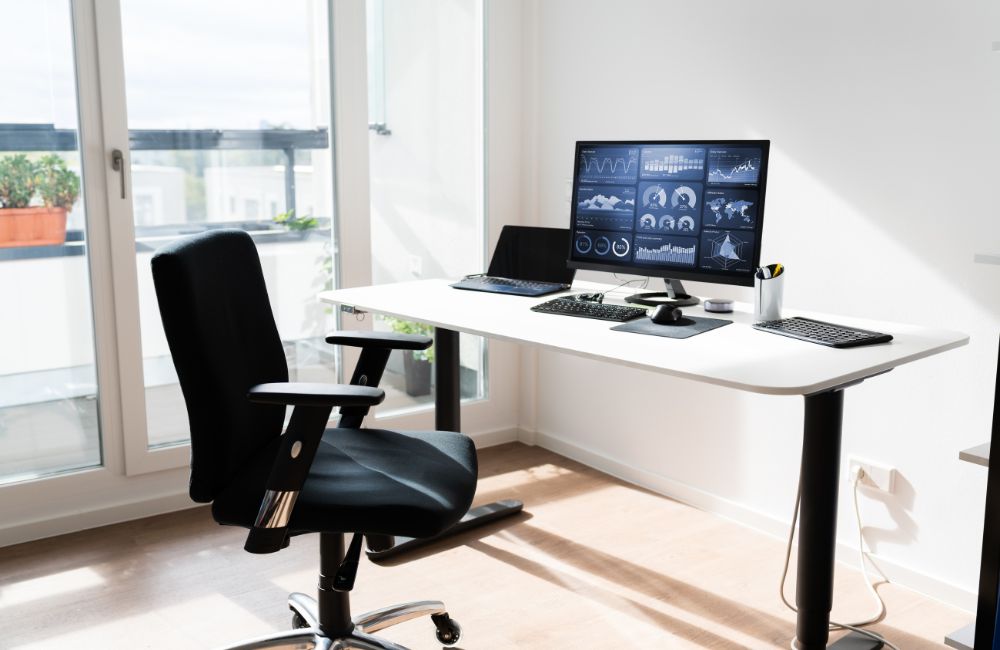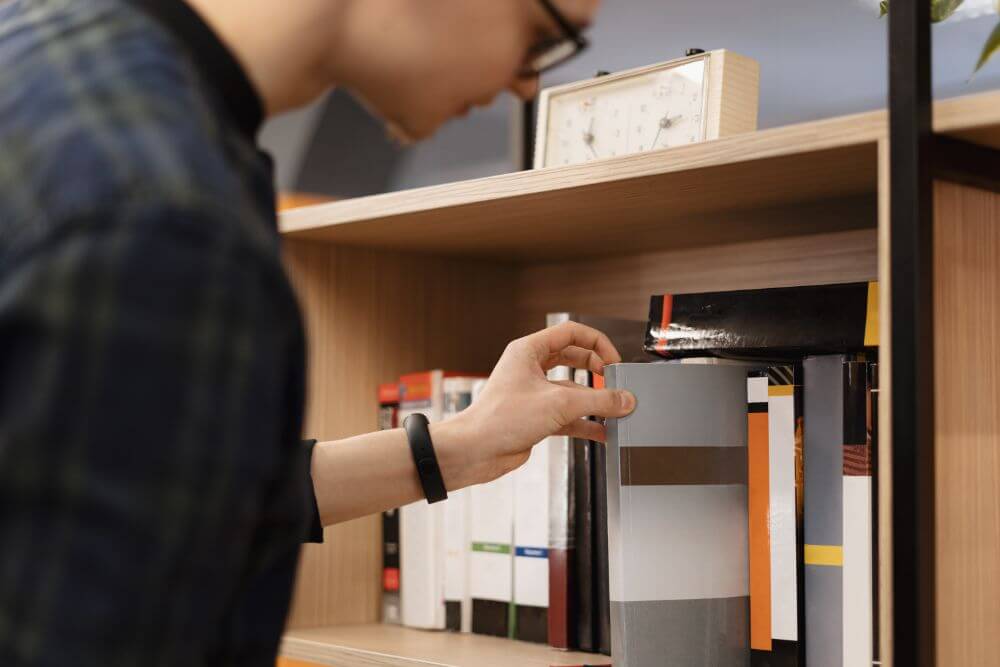
Key Takeaways✔ Opt for furniture made from renewable or certified sustainable materials to reduce environmental impact. ✔ Invest in durable furniture to minimize waste and ensure long-term use. ✔ Select furniture with non-toxic finishes to protect health and improve indoor air quality. ✔ Explore second-hand options to extend the lifecycle of furniture and reduce demand for new resources. ✔ Choose modular and multi-functional designs for adaptability and fewer replacements over time. ✔ Support brands with transparent sustainability practices and environmental certifications. |
Creating an eco-friendly workspace involves thoughtful decisions, especially when selecting office furniture. Sustainable choices not only reduce environmental impact but also promote a healthier and more productive environment for employees. By opting for furniture that aligns with green principles, businesses can contribute to a more sustainable future while maintaining functionality and style.
Here are six practical tips for choosing eco-friendly office furniture.

Creating an eco-friendly workspace starts with choosing sustainable office furniture made from renewable and environmentally responsible materials.
Furniture crafted from renewable resources ensures minimal harm to the environment. Consider materials that are both durable and sustainable.
Certifications help identify eco-friendly furniture that meets high environmental and health standards. Look for these trusted labels:
To maintain a green office solution, steer clear of furniture made from materials that harm the environment.
Creating an eco-friendly workspace involves making thoughtful decisions about furniture that minimizes waste and supports long-term sustainability. Durable office furniture is an essential component of this approach, offering environmental and financial benefits over time.
High-quality, long-lasting furniture contributes significantly to sustainability by reducing the need for frequent replacements. Each replacement demands additional resources for manufacturing, transportation, and disposal. Opting for durable options not only supports a green office solution but also saves money in the long run, ensuring businesses get the most out of their investment.
When selecting furniture for an office, certain features indicate its durability and ability to withstand years of use:
Investing in durable, sustainable office furniture brings significant advantages for businesses and the environment:
Even the most durable furniture needs proper care to maximize its lifespan. Adopting simple maintenance practices ensures furniture remains functional and attractive for many years:
Creating a healthy and eco-friendly workspace starts with thoughtful choices about the materials and finishes used in office furniture. Non-toxic finishes are a critical aspect of sustainable office furniture, ensuring better indoor air quality and protecting the health of those using the space.
Furniture finishes often contain chemicals, such as volatile organic compounds (VOCs), that emit harmful gases into the air. This process, called off-gassing, can lead to health concerns and compromise the safety of a green office solution.
When evaluating furniture finishes for sustainability, focus on these eco-friendly characteristics:
To create a safer and eco-friendly workspace, follow these steps when choosing furniture with non-toxic finishes:
Refurbished or pre-owned furniture is a practical and sustainable choice for building an eco-friendly workspace. By giving furniture a second life, it reduces waste and lessens the demand for new resources.
Purchasing second-hand furniture offers several advantages:
When selecting pre-owned furniture, it’s essential to ensure durability and usability:
Creating a sustainable office often involves selecting furniture that is adaptable and long-lasting. Modular and multi-functional designs are ideal for an eco-friendly workspace because they reduce the need for frequent replacements and minimize waste over time.
Modular furniture is designed to evolve with changing office needs. This flexibility minimizes waste while providing practical and aesthetic value for a green office solution. It allows businesses to avoid purchasing new furniture for every shift in layout or function.
Multi-functional furniture combines multiple uses in a single piece, helping reduce clutter, optimize space, and promote sustainability. This type of furniture is particularly effective in smaller offices or coworking spaces where efficiency is key.
Examples of Multi-Functional Furniture
Making informed choices about office furniture is essential for creating a sustainable office environment. Researching a brand’s commitment to ethical production and environmental sustainability ensures the furniture supports an eco-friendly workspace while meeting functional needs.
Understanding a brand’s environmental initiatives is crucial in determining its alignment with green office solutions.
Some companies extend their commitment to sustainability by ensuring their products don’t end up in landfills.
A brand’s supply chain reveals much about its sustainability efforts.
Many sustainable furniture brands offer customizable options to meet specific office needs. From adjustable desks to modular shelving systems, these pieces are designed to be versatile and user-friendly. Customization can include choosing materials, finishes, and sizes to suit your workspace and aesthetic preferences. Some manufacturers also offer options to reconfigure furniture over time, adapting to changes in office layouts or employee needs.
The main difference lies in the materials, production processes, and overall environmental impact. Sustainable furniture prioritizes eco-friendly materials like bamboo, reclaimed wood, or recycled metal, while traditional furniture often uses virgin resources. Manufacturing sustainable pieces involves energy-efficient methods and fair labor practices, unlike mass-produced options. Non-toxic finishes are common in sustainable furniture, ensuring better indoor air quality. Additionally, sustainable furniture is designed for longevity, whereas regular furniture might prioritize cost over durability.
Many sustainable furniture designs are perfect for small spaces, as they prioritize functionality and flexibility. Compact desks, wall-mounted shelves, and stackable chairs are common features in eco-friendly collections. Modular furniture systems can adapt to tight layouts, allowing users to maximize available space. Some designs include dual-purpose pieces, like storage ottomans or foldable tables, which save space without compromising usability.
Sustainable furniture options are available for outdoor spaces, often made from materials like bamboo, teak, or recycled plastics. These materials are weather-resistant, durable, and eco-friendly, making them ideal for patios or gardens. Some brands use upcycled materials, such as reclaimed wood or repurposed metal, for outdoor furniture. Non-toxic finishes and sealants ensure the furniture is safe for the environment and your family. Look for pieces with certifications like FSC to ensure responsible sourcing of materials.
Yes, many manufacturers offer ergonomic office furniture made from sustainable materials, ensuring both comfort and environmental responsibility. Adjustable desks allow users to switch between sitting and standing, promoting better posture and reducing strain. Lumbar-support chairs made from recycled or eco-friendly materials provide proper back support while minimizing environmental impact. Responsibly sourced materials, such as FSC-certified wood or recycled metal, ensure durability without harming the planet. Choosing ergonomic and eco-friendly furniture creates a healthier, more sustainable workspace for employees.
At Stamford Office Furniture, we’ve been helping businesses, healthcare providers, schools, and government offices in New Haven, CT, create functional and sustainable workspaces for nearly 50 years. Our extensive selection of sustainable office furniture includes innovative designs from over 200 leading brands. As a proud MillerKnoll Certified Dealer for nearly two decades, Stamford Office Furniture offers products backed by a legacy of quality, innovation, and sustainability.
Visit our working showroom in New Haven, CT, where our own workspaces showcase the products we offer. Let Stamford Office Furniture help you create a workspace in New Haven, CT, that reflects your values and supports a greener, more productive environment!